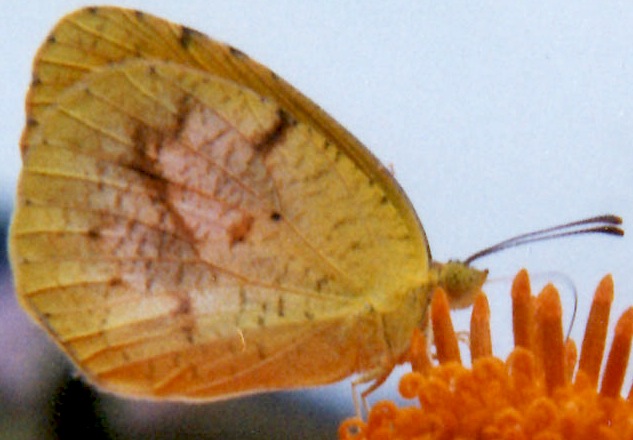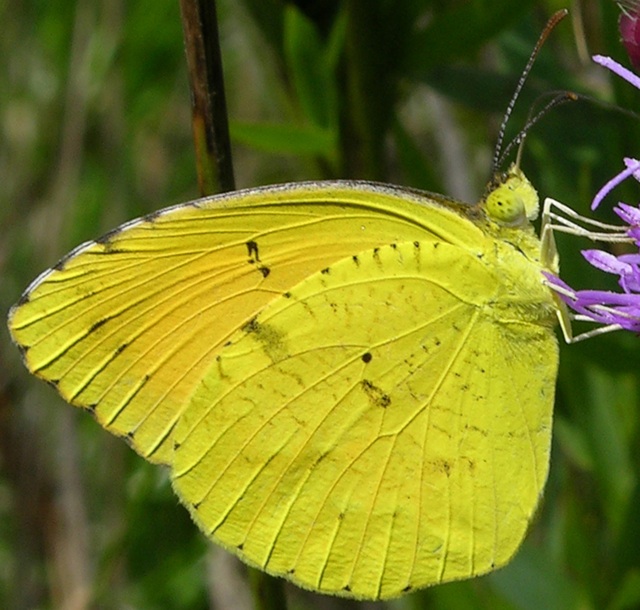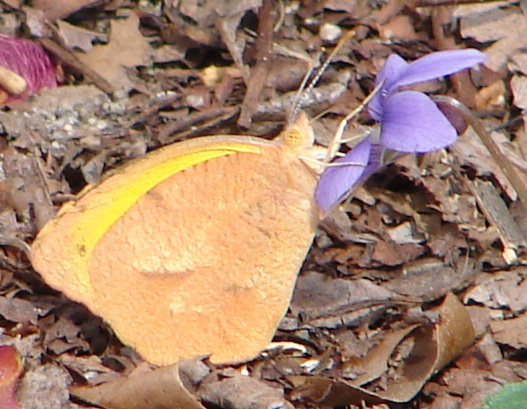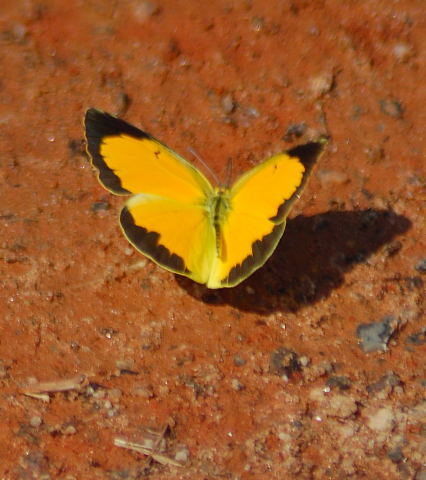|
| Common Name | Sleepy Orange by Roger Rittmaster => Durham Co.
[View PDF]
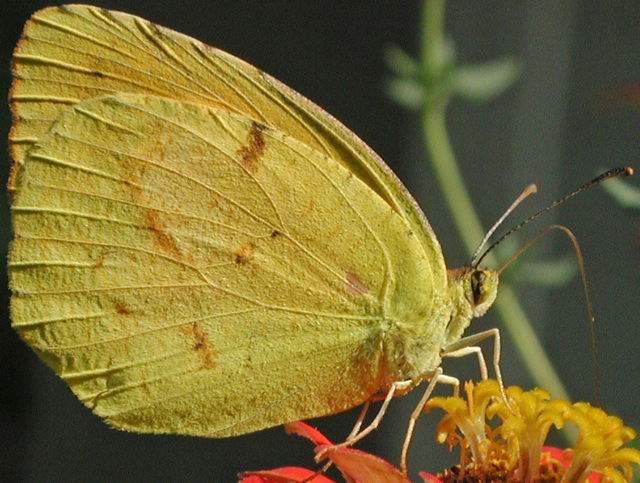 Click to enlarge Click to enlarge
[Google Images] GBIF [Global Distribution ] BoA [Images ] iNaturalist |
| Scientific Name | Abaeis nicippe
|
| Link to BAMONA species account. |
| Map | Click on a county for list of all database records for the species in that county.
 |
| Distribution | DISTRIBUTION: Statewide, though it might be only a migrant into many Mountain counties.
|
| Abundance | ABUNDANCE: The species is clearly more common in the east than in the Mountains. It is common to abundant in the Coastal Plain and lower Piedmont, common in most of the remainder of the Piedmont, and generally locally uncommon in the Mountains. From July to October, it is one of the most numerous butterflies in the state.
|
| Flight | FLIGHT PERIOD: Several broods (at least three), with the species being much more common in summer and early fall than in spring. It appears by late February or early March, with the first brood finishing by late May. A second brood begins by early June. From mid-July into late October, the species is very numerous, and it is on the wing well into November; a few can be seen in winter on warm days. Whether late summer/fall populations are enhanced by migrants from the south is not clear.
|
| Habitat | HABITAT: Widespread, primarily in open country. Usually seen around cultivated fields and other fields and meadows, but also along woodland borders and openings in woods. Unlike other sulphurs, it may be seen at times inside forests (at least along forest road margins). It is most common around croplands that have been invaded by Sicklepod (Senna obtusifolia), such as soybean fields.
|
|
| | Plants | FOOD AND NECTAR PLANTS: Foodplants are various Senna species (and presumed also Chamaecrista species), all in the legume family (Fabaceae). Based on its abundance around croplands, the "weedy" Senna obtusifolia is an important foodplant. The species nectars on a wide variety of species.
|
| Comments | COMMENTS: This is an "interesting" species. In the spring, it may be seen flying inside woods and along woodland borders alongside the Falcate Orangetip. It is not overly common at that season, and it is a welcome and colorful harbinger of spring. By midsummer and fall, it behaves almost like a different species. It abounds by the dozens around soybean fields and other cultivated fields, which in the spring are mostly plowed fields (and thus not suitable butterfly habitat).
|
State Rank | S5 | | State Status | |
Global Rank | G5 | | Federal Status | |
| Synonym | Eurema nicippe
|
| Other Name |
|
|
|

 >>
>>